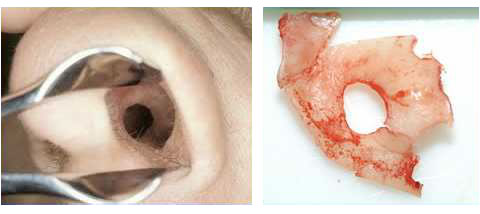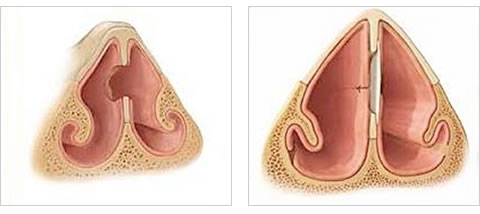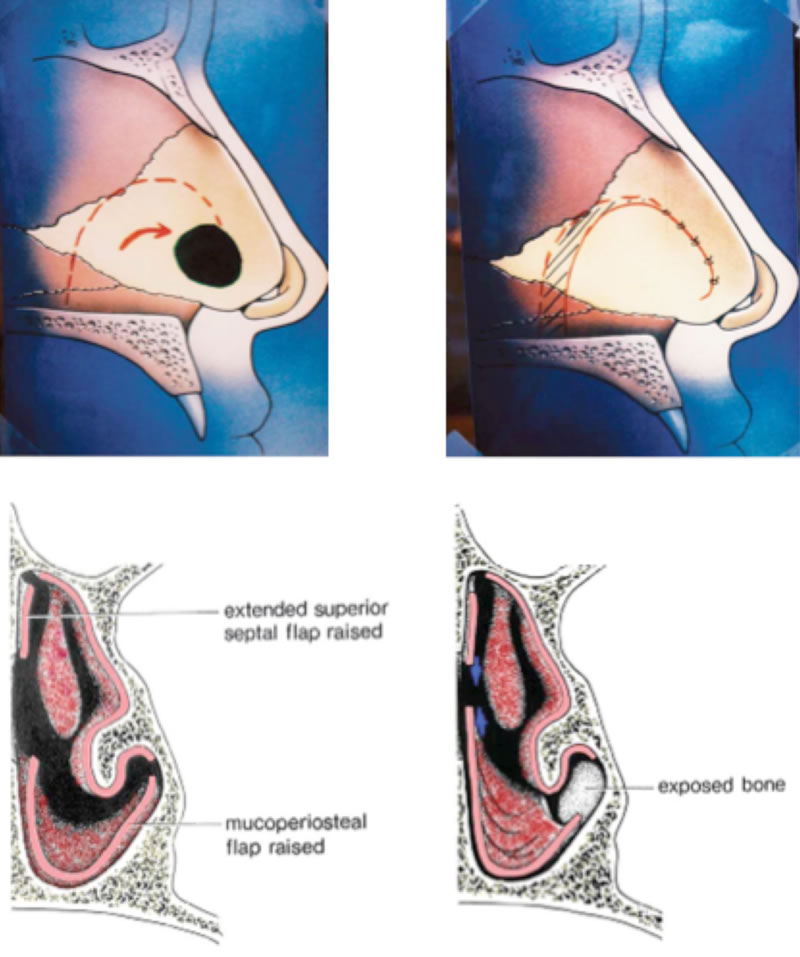CREATION OF PERFORATIONS
Septal perforations can be caused by:
- Incorrectly performed operations on the nose
- Vascular diseases
- Excessive nose picking/rhinotillexomania
- Cocaine use
- An unknown cause (50% are idiopathic)
- Perforations can cause minimal but also significant functional symptoms for the patient
Small perforations can cause a whistling sound when a patient breathes through the nose. Large perforations usually do not cause whistling, but they do cause a feeling of congestion and contribute to nasal crusting. This can be very annoying for the patient. Correction of a septal perforation depends on the size of the perforation.
Small perforations can be corrected with a one-stage (2-hour) operation with a high success rate > 90%.
The diagram opposite shows the inner lining of the nose on both sides of the septum to close the hole and a cartilage graft to repair the hole in the frame.


TYPES OF PERFORATIONS
Smaller to moderate perforations up to 3 cm can be repaired with flaps on the inside of the nose and cartilage graft from your ear cartilage (see our group publications on septal perforation). Very large perforations larger than 3-4 cm can still be closed/repaired surgically, but this is much more complicated.
There are different ways of tackling saddle nose deformity. However, the majority can be corrected in a one-stage operation. Some more severe forms require more than one stage to reconstruct the part of the nose. We have additional techniques to repair large septal perforations that are not amenable to closure/repair using standard techniques.

Septal Perforation FAQs
What is a septal perforation?
What are the common causes of septal perforations?
What are the symptoms of a septal perforation?
How is a septal perforation diagnosed?
Can a septal perforation heal on its own?
What are the treatment options for a septal perforation?
Is surgery always necessary to correct a septal perforation?
What is involved in septal perforation surgery?
What is the recovery like after septal perforation surgery?
How successful is septal perforation repair surgery?
When is surgery recommended for a septal perforation?
What types of surgical procedures are used to repair a septal perforation?
Are multiple surgeries sometimes required to fully correct a septal perforation?
What are the risks and potential complications associated with septal perforation repair?
Will surgical repair restore both the function and appearance of the nose in patients with a septal perforation?
EXECUTIVE DOCTOR

CALLUM FARIS
ENT specialist and specialist in facial plastic surgery

